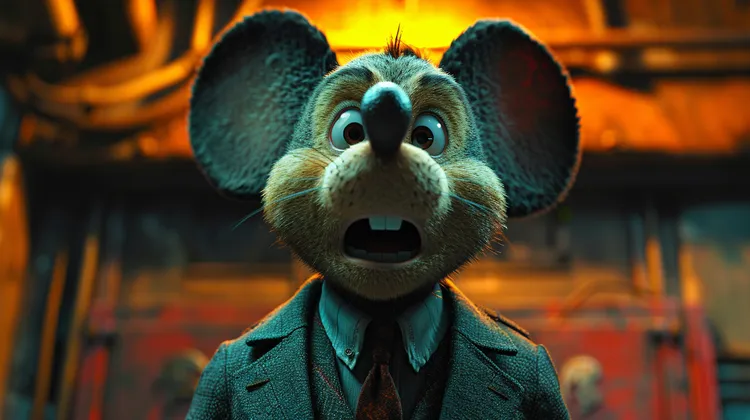When discussions around Bitcoin emerge, they often revolve around its value, security, and potential for disrupting financial systems. There’s an artistic side to the cryptocurrency world that receives less attention. Casey Rodarmor stands out as a pioneering figure within this niche, ingeniously blending his programming skills with an artist’s touch. His work embodies the ethos of blockchain—the underlying technology of Bitcoin—while challenging traditional art industry norms.
An artist by nature and a coder by profession, Casey Rodarmor has been active at the intersection of technology and art for many years. He sees Bitcoin as more than a digital asset; to him, it is a canvas with unlimited potential, ripe for creative expression. His journey into the world of Bitcoin art started as a curiosity, and it quickly turned into a passion—a way to make tangible the abstract intricacies of the world of cryptocurrency.
Rodarmor’s art often challenges perceptions. While the concept of ‘Bitcoin Art’ might seem oxymoronic to some—how does one artistically represent a virtual currency?—Rodarmor finds ways to manifest the digital into physical form. From paper wallets adorned with intricate designs to physical coins that serve as art pieces, his creations not only hold aesthetic value, they are often functional, acting as unique storage vessels for the cryptocurrency.
One of Rodarmor’s most notable projects is the “Ordinals” protocol that allows for digital artifacts like images and videos to be inscribed permanently on the Bitcoin blockchain. These artifacts are known as “inscriptions” and are not to be confused with non-fungible tokens (NFTs) on alternate blockchains like Ethereum; they are instead entirely rooted within the Bitcoin network. This project, though technical in nature, has a forward-thinking artistic dimension, as it allows for the creation of immutable digital art pieces—or “Ordinal inscriptions”—that can’t be replicated or destroyed.
Rodarmor’s work often embodies a sense of playfulness and humor that is sometimes lacking in the cryptocurrency space. His initiatives, including tongue-in-cheek projects and pieces, serve as a reminder that innovation can have a lighter side. This approach has helped to demystify Bitcoin for a broader audience, making its complex world more accessible and engaging.
The Bitcoin artist does not shy away from the ideological aspects inherent in his medium of choice. Many of his pieces reflect on the libertarian philosophies that often drive cryptocurrency enthusiasts. Rodarmor’s work explores themes of decentralization, privacy, and autonomy—central tenets of the Bitcoin narrative.
Rodarmor actively participates in the broader conversation about the direction of the crypto-art space. He engages with both the crypto community and the art world, presenting his work at galleries, conferences, and symposiums. His aim is not solely to display his pieces but to spark dialogue surrounding the value, ownership, and future of art in the era of blockchain technology.
Education plays a significant role in Rodarmor’s artistic mission. He creates pieces that are multi-layered, offering something for both the crypto-savvy and the uninitiated. For those unfamiliar with the technical underpinnings of Bitcoin, his art serves as an entry point, encouraging exploration and learning. For the experts, his work stands as a commentary on the evolving landscape of cryptocurrency and its potential applications.
Another aspect that makes Casey Rodarmor’s work compelling is the interplay of scarcity and replication in his art. While Bitcoin itself is valued for its limited supply, digital art can be easily copied. Yet, by inscribing art onto the Bitcoin blockchain, Rodarmor effectively merges the concept of digital uniqueness with the replicability of art—a conundrum that poses new questions about originality in the digital age.
Rodarmor’s Bitcoin art is also a reflection on value—both financial and intrinsic. His pieces pose the question: What gives art, currency, or any object value? By combining a tradable asset with an artistic process, he invites reflection on the nature of worth and challenges the viewer to consider the significance imbued in both art and currency.
Casey Rodarmor is more than an artist—he is a provocateur in the crypto world, using his talents to initiate a critical examination of the relationship between art, technology, and society. As the world becomes increasingly digitized and intertwined with virtual currencies, the relevance of his work only grows, serving as a bridge between two seemingly disparate realms.
The work of Casey Rodarmor exemplifies the innovative and transformative potential of combining art with emerging technologies like Bitcoin. His art breaks ground by imbuing the cold, hard digital world with humanness, creativity, and wit. Rodarmor is a beacon for crypto-artists and enthusiasts, illustrating that Bitcoin and blockchain are not just for traders and techies—they can also serve as a rich medium for artists and visionaries looking to leave an indelible mark on the world.




Really appreciate how Casey’s work draws in people from different interest spherestech, art, financeyou name it!
Blending humor with serious tech is a recipe for success. Casey’s got it down to an art!
His art makes you think and challenges your perceptions of value. Mind-bending stuff from Casey!
That tongue-in-cheek approach is so needed in the sometimes too serious crypto sphere. Keep it up, Casey!
Art with functionality, beauty, and a statement. Casey’s work is the embodiment of creativity and intelligence.
Love the way Rodarmor intertwines libertarian themes with his art. It’s thought-provoking and aesthetically pleasing!